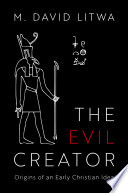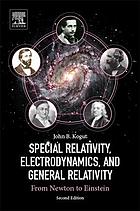The elements of relativity 1st Edition by David Wittman 0191633232 9780191633232
$50.00 Original price was: $50.00.$25.00Current price is: $25.00.
The elements of relativity 1st Edition by David M. Wittman – Ebook PDF Instant Download/DeliveryISBN: 0191633232, 9780191633232
Full download The elements of relativity 1st Edition after payment.

Product details:
ISBN-10 : 0191633232
ISBN-13 : 9780191633232
Author: David M. Wittman
Relativity has much to offer for a well-rounded education. Yet books on relativity either assume a strong background in physics and math, aimed at advanced physics students, or, alternatively, offer a broad description with little intellectual challenge. This book bridges the gap. It aims at readers with essentially no physics or math background, who still find it rewarding to think rigorously. The book takes a “thinking tools” approach, by first making readers comfortable with a new thinking tool and then applying it to learn more about how nature works. By the end of the book, readers will have collected a versatile toolbox and will be comfortable using the tools to think about and really understand the intriguing phenomena they may have only heard about, including the twin paradox, black holes, and time travel. End-of-chapter exercises span a range of difficulty, allowing adventurous readers to stretch their understanding further as desired. Students who have studied, or are studying, relativity at a more mathematical level will also find the book useful for a more conceptual understanding.
The elements of relativity 1st Table of contents:
1 A First Look at Relativity
1.1 Coordinates and displacement
1.2 Velocity
1.3 Galilean velocity addition law
1.4 Velocity is an arrow
1.5 Symmetry and the principle of relativity
Chapter summary
Study Advice
Check your understanding: explanations
Exercises
Problems
2 Acceleration and Force
2.1 Acceleration
2.2 Acceleration, force, and mass
2.3 Accelerating frames and fictitious forces
2.4 Inertial frames
Chapter summary
Check your understanding: explanations
Exercises
Problems
3 Galilean Relativity
3.1 Motion in two (or more) dimensions
3.2 Projectile motion
3.3 Principle of relativity
Chapter summary
Check your understanding: explanations
Exercises
Problems
4 Reasoning with Frames and Spacetime Diagrams
4.1 The river and the hat
4.2 Frame-dependent versus frame-independent questions
4.3 Coordinate grids of moving frames
4.4 Transverse distances are always frame-independent
4.5 Billiards
4.6 Accelerated frames
4.7 Assumptions
Chapter summary
Check your understanding: explanations
Exercises
Problems
5 The Speed of Light
5.1 Observation: the speed of light is frame-independent
5.2 Implication: nothing can travel faster than c
5.3 Implications for the velocity addition law
5.4 Graphical interpretation
5.5 Incomplete versus wrong models
Chapter summary
Further Reading
Check your understanding: explanations
Exercises
Problems
6 Time Skew
6.1 Simultaneity is frame-dependent
6.2 Practice with skewed grids
6.3 Time skew
6.4 Causality
Chapter summary
Further reading
Check your understanding: explanations
Exercises
Problems
7 Time Dilation and Length Contraction
7.1 Time dilation
7.2 Light clocks and γ
7.3 Length contraction and reciprocity
7.4 Experimental proof
7.5 Time dilation with spacetime diagrams
7.6 Light clock along the direction of motion
Chapter summary
Further reading
Check your understanding: explanations
Exercises
Problems
8 Special Relativity: Putting it All Together
8.1 Solving problems with spacetime diagrams
8.2 Measuring the length of a moving object
8.3 Train in tunnel paradox
8.4 Velocity addition
8.5 Clocks
Further reading
Problems
9 Doppler Effect and Velocity Addition Law
9.1 Doppler effect basics
9.2 Doppler effect and special relativity
9.3 Doppler law and applications
9.4 Einstein velocity addition law
Chapter summary
Further reading
Check your understanding: explanations
Exercises
Problems
10 The Twin Paradox
10.1 Alice and Bob communicate
10.2 What Alice observes
10.3 Changing frames
10.4 Principle of longest proper time
10.5 Faster-than-light speeds and time travel
Chapter summary
Check your understanding: explanations
Exercises
Problems
11 Spacetime Geometry
11.1 Geometry of space
11.2 The spacetime metric
11.3 Understanding the metric
11.4 Spacetime geometry is hyperbolic
Chapter summary
Further reading
Check your understanding: explanations
Exercises
Problems
12 Energy and Momentum
12.1 Energy and momentum (Galilean)
12.2 Energy and momentum (including speeds near c)
12.3 Energy-momentum relation
12.4 E = mc2
12.5 Energy budget for particles with mass
12.6 Massless particles
Chapter summary
Further reading
Check your understanding: explanations
Exercises
Problems
13 The Equivalence Principle
13.1 Gravity is special
13.2 Equivalence principle
13.3 Slow time
13.4 Gravitational redshift
13.5 Gravity disappears in freely falling frames
Chapter summary
Further reading
Check your understanding: explanations
Exercises
Problems
14 Gravity Reframed
14.1 Maximizing proper time
14.2 Metrics and the geodesic equation
14.3 Graphical model
Chapter summary
Further reading
Check your understanding: explanations
Exercises
Problems
15 Potential
15.1 Definition of potential
15.2 The potential traces slow time
15.3 Visualizing the potential
Chapter summary
Check your understanding: explanations
Exercises
Problems
16 Newtonian Gravity
16.1 Invisible string
16.2 Fields and test masses
16.3 Newton’s law of universal gravitation
16.4 Gravity in and around spheres
16.5 Gravitational potential revisited
16.6 Surface gravity and compact objects
16.7 Tides
Chapter summary
Further reading
Check your understanding: explanations
Exercises
Problems
17 Orbits
17.1 Circular orbits
17.2 Elliptical orbits
17.3 Symmetry of orbits
17.4 Slingshot maneuver
17.5 Dark matter versus modified gravity
17.6 Masses of stars
17.7 Extrasolar planets
Chapter summary
Further reading
Check your understanding: explanations
Exercises
Problems
18 General Relativity and the Schwarzschild Metric
18.1 From Newton to Einstein
18.2 Elements of general relativity
18.3 The Einstein equation
18.4 The Schwarzschild solution
18.5 Curved space
18.6 Observable consequences of the Schwarzschild metric
18.7 Time versus space parts of the metric
Chapter Summary
Further reading
Check your understanding: explanations
Exercises
Problems
19 Beyond the Schwarzschild Metric
19.1 General relativity in context
19.2 Gravitomagnetism
19.3 Gravitational waves
19.4 Gravitational lensing
19.5 Cosmology
Chapter summary
Further reading
Check your understanding: explanations
Exercises
Problems
20 Black Holes
20.1 What is a black hole?
20.2 A closer look at the horizon
20.3 Black holes in nature
20.4 Facts and myths about black holes
20.5 Spinning black holes
People also search for The elements of relativity 1st:
relativity and the periodic system of elements
what is the principle of relativity
how does einstein’s theory of relativity work
what does einstein’s theory of relativity state
what does einstein’s theory of relativity explain
Tags: The elements, relativity, David Wittman, strong background
You may also like…
Politics & Philosophy - Anthropology
Religion & Spirituality - Christianity
The Evil Creator: Origins of an Early Christian Idea M. David Litwa
Uncategorized
Relativity Made Relatively Easy. Volume 2: General Relativity and Cosmology 1st Edition
Politics & Philosophy
The Elements of Moral Philosophy (10th Edition) James Rachels
Biography & Autobiography - Theatre & Performance Art
The Art of the Actress (Elements in Eighteenth-Century Connections) 1st edition
Computers - Programming
Physics - Relativity











